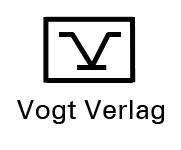Details
| Autor: | Walter P. Nitzold |
| Titel: | Rate-Flexible LDPC Convolutional Code Design |
| Typ: | Dissertation |
| Fachgebiet: | Informationstechnik |
| Reihe: | Mobile Nachrichtenübertragung, Nr.: 78 |
| Auflage: | 1 |
| Sprache: | Englisch |
| Erscheinungsdatum: | 02.11.2015 |
| Lieferstatus: | lieferbar |
| Umfang: | 146 Seiten |
| Bindung: | Soft |
| Preis: | 49,00 EUR |
| ISBN: | 9783938860953 |
| Umschlag: | (vorn) |
| Inhaltsverzeichnis: | (pdf) |
Abstrakt in Englisch
Digital communication system have advanced tremendously over the last decades and yielded applications such as high speed data transfer in LTE. In recent years, new communication scenarios like machine-to-machine systems have evolved. These scenarios demand for highly energy efficient receiver design as battery life is crucial in, e.g., sensor networks. A large part of the receivers energy is consumed by the channel decoder, therefore code designs should be at hand, that exhibit low decoding complexity without any loss in transmission performance. As the aforementioned applications also demand for a flexible adaption of the coding rate for efficient transmission, code designs have to be optimized for a wide rate interval. The recent ascent of LDPC convolutional codes as a capacity achieving code construction makes them a promising option for these communication systems. The thesis is concerned with the investigation of LDPC convolutional code constructions that on the one hand exhibit a good performance close to the Shannon limit for a wide range of rates as well as adequate decoding complexity. Already regular LDPC convolutional codes are capable of achieving the Shannon limit when coupling length and width are chosen appropriately large. Their flexibility for achieving different rates is discussed and it is shown that with finite small coupling width, not the complete rate region can be covered smoothly with low complexity good performing code ensembles. Therefore, a new code construction is introduced that overcomes this issue by using slight irregularity in the ensemble description. These code ensembles outperform their regular counterparts for every considered rate. The constraint of rate-compatibility adds a new restriction to the optimization of LDPC convolutional code constructions. To assess the different rate-compatible extension structures, a framework based on multi-edge type LDPC codes is introduced. The capabilities of regular rate-compatible LDPC convolutional codes are discussed and reveal that a break-down in performance for lower rates is always due to increasing variable node degree and can only be overcome by an increased coupling width. Based on this observation, new code constructions with relaxed degree evolutions for different rates are introduced and show significant performance increases and lower decoding complexity. A similarity between the parity-check matrix structure of a nested rate-compatible code and an LDPC convolutional code is investigated. It turns out that the goal of transferring the good message propagation effects responsible for the performance improvement of LDPC convolutional codes to the nested codes can not be accomplished completely. A new double-banded parity-check matrix code construction is introduced with good decoding performance but capacity approaching effect is out of reach due to the lack of self-similarity in the decoding graph.


